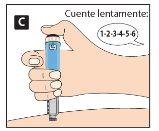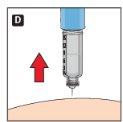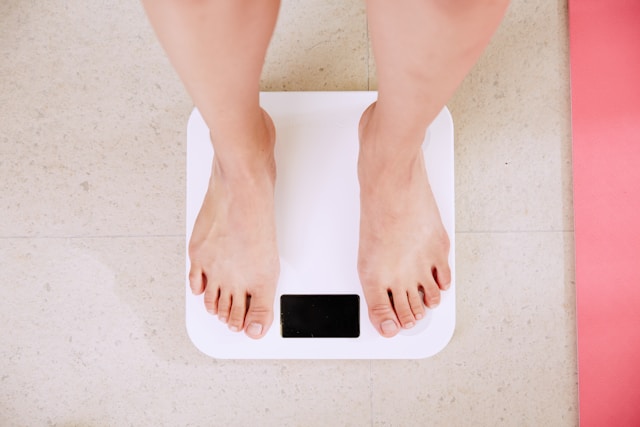
BYESILOR 6 mg/ml INJECTABLE SOLUTION IN PRE-FILLED PEN
Ask a doctor about a prescription for BYESILOR 6 mg/ml INJECTABLE SOLUTION IN PRE-FILLED PEN

How to use BYESILOR 6 mg/ml INJECTABLE SOLUTION IN PRE-FILLED PEN
Introduction
Package Leaflet: Information for the Patient
Byesilor 6 mg/ml Solution for Injection in Pre-filled Pen EFG
Liraglutide
Read all of this leaflet carefully before you start using this medicine because it contains important information for you.
- Keep this leaflet, you may need to read it again.
- If you have any further questions, ask your doctor, pharmacist, or nurse.
- This medicine has been prescribed for you only. Do not pass it on to others. It may harm them, even if their signs of illness are the same as yours.
- If you get any side effects, talk to your doctor, pharmacist, or nurse. This includes any possible side effects not listed in this leaflet. See section 4.
Contents of the Package Leaflet
- What is Byesilor and what is it used for
- What you need to know before you start using Byesilor
- How to use Byesilor
- Possible side effects
- Storage of Byesilor
- Package Contents and Further Information
1. What is Byesilor and what is it used for
What is Byesilor
Byesilor is a weight-loss medicine that contains the active substance liraglutide. It is similar to a naturally occurring hormone called glucagon-like peptide-1 (GLP-1) that is released from the intestine after eating. This medicine works on the brain's receptors that control appetite, making you feel fuller and less hungry. This way, it can help you eat less and reduce your body weight.
What is Byesilor used for
This medicine is used for weight loss together with a suitable diet and exercise in adults over 18 years of age with
- a BMI of 30 kg/m2 or higher (obesity) or
- a BMI of 27 kg/m2 and less than 30 kg/m2 (overweight) and weight-related health problems (such as diabetes, high blood pressure, abnormal blood fat levels, or breathing problems during sleep called "obstructive sleep apnea").
Body Mass Index (BMI) is a measure of body weight in relation to height.
You should only continue using this medicine if you have lost at least 5% of your initial body weight after 12 weeks of treatment with a daily dose of 3.0 mg (see section 3). Consult your doctor before continuing.
This medicine can be used in combination with a healthy diet and increased physical activity to control weight in adolescent patients from 12 years onwards with:
- obesity (diagnosed by your doctor)
- body weight over 60 kg
You should only continue using this medicine if you have lost at least 4% of your BMI after 12 weeks of treatment with a dose of 3.0 mg/day or the maximum tolerated dose (see section 3). Consult your doctor before continuing.
Diet and Exercise
Your doctor will put you on a diet and indicate an exercise program that you should follow while being treated with this medicine.
2. What you need to know before you start using Byesilor
Do not use Byesilor
- if you are allergic to liraglutide or any of the other ingredients of this medicine (listed in section 6).
Warnings and Precautions
Consult your doctor, pharmacist, or nurse before starting treatment with Byesilor.
The use of this medicine is not recommended if you have severe heart failure.
There is limited experience with this medicine in patients over 75 years of age. It is not recommended if you are 75 years of age or older.
There is limited experience with this medicine in patients with kidney problems. If you have kidney disease or are on dialysis, consult your doctor.
There is limited experience with this medicine in patients with liver problems. If you have liver problems, consult your doctor.
This medicine is not recommended if you have a severe stomach or intestinal problem that causes delayed stomach emptying (called gastroparesis), or if you have an inflammatory bowel disease.
If you know you are going to have surgery that involves anesthesia (a state of sleep), inform your doctor that you are taking Byesilor.
People with Diabetes
If you are diabetic, do not use this medicine as a substitute for insulin.
Pancreatitis
Consult your doctor if you have or have had a pancreatic disease. Inflammation of the gallbladder and gallstones
If you lose a lot of weight, you are at risk of developing gallstones and, as a consequence, inflammation of the gallbladder. Stop using this medicine and contact your doctor immediately if you experience severe pain in the upper abdomen, usually worse on the right side, below the ribs. The pain can radiate to the back or the right shoulder. See section 4.
Thyroid disease
Consult your doctor if you have thyroid disease, including thyroid nodules and thyroid gland enlargement.
Heart rate
Consult your doctor if you have palpitations (you are aware of your heartbeat) or if you have a feeling of rapid heartbeat at rest during treatment with this medicine.
Loss of fluids and dehydration
When starting treatment with this medicine, you may lose fluids or become dehydrated. This can be due to the occurrence of nausea, vomiting, and diarrhea. It is essential to avoid dehydration by drinking plenty of fluids. If you have any doubts or questions, consult your doctor, pharmacist, or nurse. See section 4.
Children and Adolescents
The safety and efficacy of this medicine have not been studied in children under 12 years of age.
Other Medicines and Byesilor
Inform your doctor, pharmacist, or nurse if you are using, have recently used, or might use any other medicines.
In particular, inform your doctor, pharmacist, or nurse if:
- you are taking diabetes medicines called "sulfonylureas" (such as glimepiride or glibenclamide) or if you are taking insulin. Your blood sugar level may drop (hypoglycemia) if you use these medicines with liraglutide. Your doctor may adjust the dose of your diabetes medication to prevent episodes of hypoglycemia. See section 4 for warning signs of low blood sugar. If you adjust your insulin dose, your doctor may recommend checking your blood sugar level more frequently.
- you are taking warfarin or other oral medicines that reduce blood clotting (anticoagulants). More frequent blood tests may be needed to determine your blood's clotting ability.
Pregnancy and Breastfeeding
Do not use this medicine if you are pregnant, think you may be pregnant, or plan to become pregnant, as it is not known whether liraglutide can affect the fetus.
If you are using this medicine, you should avoid breastfeeding, as it is not known whether liraglutide is excreted in breast milk.
Driving and Using Machines
It is unlikely that liraglutide will affect your ability to drive or use machines.
Some patients may feel dizzy when taking liraglutide, mainly during the first 3 months of treatment (see section "Possible Side Effects"). If you feel dizzy, be very careful when driving or using machines. If you need more information, consult your doctor.
Important Information about Some of the Ingredients of Byesilor
This medicine contains less than 1 mmol of sodium (23 mg) per dose; this is essentially "sodium-free".
3. How to Use Byesilor
Follow the instructions for administration of this medicine exactly as indicated by your doctor. If you are unsure, consult your doctor, pharmacist, or nurse again.
Your doctor will put you on a diet and indicate an exercise program that you should follow while being treated with this medicine.
How Much to Inject
Adults
Treatment will start with a low dose that will be gradually increased over the first five weeks of treatment.
- When you start using this medicine, the initial dose is 0.6 mg once a day for at least one week.
- Your doctor will indicate that you gradually increase the dose, usually by 0.6 mg per week, until you reach the recommended dose of 3.0 mg once a day.
Your doctor will indicate the amount of this medicine you should use each week. You will usually be advised to follow the following table.
Week | Injected Dose |
Week 1 | 0.6 mg once a day |
Week 2 | 1.2 mg once a day |
Week 3 | 1.8 mg once a day |
Week 4 | 2.4 mg once a day |
Week 5 onwards | 3.0 mg once a day |
Once you have reached the recommended dose of 3.0 mg in week 5 of treatment, continue using this dose until the end of the treatment period. Do not increase the dose further.
Your doctor will periodically evaluate your treatment.
Adolescents (≥ 12 years)
For adolescents from 12 years to less than 18 years, follow a gradual dose increase as in adults (see the table for adults above). The dose should be increased to 3.0 mg (maintenance dose) or up to the maximum tolerated dose. Daily doses above 3.0 mg are not recommended.
How and When to Use Byesilor
- Before using the pen for the first time, your doctor or nurse will show you how to use it.
- You can use this medicine at any time of day, with or without food and drink.
- Use this medicine approximately at the same time every day: choose a time that suits you best.
Where to Inject
This medicine is administered as an injection under the skin (subcutaneous injection).
- The best areas for injection are the abdomen, the front of the thigh, or the upper arm.
- Change the injection site each day to reduce the risk of developing lumps under the skin. Do not inject into a vein or muscle.
On the other side of this leaflet, you will find detailed instructions for use.
People with Diabetes
Inform your doctor if you have diabetes. Your doctor may adjust the dose of your diabetes medication to prevent episodes of hypoglycemia.
- Do not mix this medicine with other injectable medicines (e.g., insulins).
- Do not use this medicine in combination with other medicines that contain GLP-1 receptor agonists (such as exenatide or lixisenatide).
If You Use More Byesilor than You Should
- If you use more medicine than you should, talk to a doctor or go to a hospital immediately. Take the medicine package with you. You may need medical treatment. The following effects may occur:
- nausea
- vomiting
- low blood sugar (hypoglycemia). See warning signs of low blood sugar in "Common Side Effects".
If You Forget to Use Byesilor
- If you forget a dose and remember within 12 hours of when you normally inject the dose, inject it as soon as you remember.
- However, if more than 12 hours have passed since you should have used this medicine, skip the missed dose and inject the next dose the following day at the usual time.
- Do not use a double dose or increase the dose the next day to make up for the missed dose.
If You Stop Treatment with Byesilor
Do not stop treatment with this medicine without consulting your doctor.
If you have any further questions about the use of this medicine, ask your doctor, pharmacist, or nurse.
4. Possible Side Effects
Like all medicines, this medicine can cause side effects, although not everybody gets them.
Serious Side Effects
Rarely, serious allergic reactions (anaphylaxis) have been reported in patients using liraglutide. See your doctor immediately if you have symptoms such as breathing problems, swelling of the face and throat, and palpitations.
Very rarely, cases of pancreatitis (inflammation of the pancreas) have been reported in patients using liraglutide. Pancreatitis is a serious and potentially life-threatening disease. Stop using this medicine and contact your doctor immediately if you notice any of the following serious side effects:
- Severe and persistent abdominal pain (in the stomach area) that may radiate to the back, as well as nausea and vomiting, as it could be a sign of pancreatitis.
Other Side Effects
Very Common:may affect more than 1 in 10 people
- Nausea, vomiting, diarrhea, constipation, headache; usually disappear after a few days or weeks.
Common:may affect up to 1 in 10 people
- Stomach and intestinal problems such as indigestion (dyspepsia), inflammation of the stomach lining (gastritis), stomach discomfort, pain in the upper stomach, heartburn, feeling bloated, gas (flatulence), belching, and dry mouth
- Feeling weak or tired
- Changes in taste
- Dizziness
- Difficulty sleeping (insomnia). Usually occurs during the first 3 months of treatment
- Gallstones
- Rash
- Reactions at the injection site (such as bruising, pain, irritation, itching, and rash)
- Low blood sugar (hypoglycemia). Warning signs of low blood sugar may appear suddenly and include: cold sweat, cool pale skin, headache, palpitations, nausea, excessive hunger, vision problems, drowsiness, feeling weak, nervousness, anxiety, confusion, difficulty concentrating, and tremors. Your doctor will tell you how to treat low blood sugar and what to do if you notice these warning signs
- Increased pancreatic enzymes, such as lipase and amylase.
Uncommon:may affect up to 1 in 100 people
- Loss of fluids (dehydration). This is more likely to occur at the start of treatment and may be due to vomiting, nausea, and diarrhea
- Delayed gastric emptying
- Inflamed gallbladder
- Allergic reactions including skin rashes
- Feeling unwell
- Faster heart rate.
Rare:may affect up to 1 in 1,000 people
- Reduced kidney function
- Acute kidney failure. Symptoms may include reduced urine output, metallic taste in the mouth, and easy bruising (bleeding under the skin).
Frequency Not Known:cannot be estimated from the available data
- Intestinal obstruction. A severe form of constipation with additional symptoms such as stomach pain, bloating, vomiting, etc.
- Lumps under the skin can occur due to the accumulation of a protein called amyloid (cutaneous amyloidosis; the frequency with which this occurs is not known).
Reporting of Side Effects
If you experience any side effects, talk to your doctor, pharmacist, or nurse. This includes any possible side effects not listed in this leaflet. You can also report side effects directly through the Spanish Pharmacovigilance System for Human Use Medicines: www.notificaRAM.es. By reporting side effects, you can help provide more information on the safety of this medicine.
5. Storage of Byesilor
Keep this medicine out of the sight and reach of children.
Do not use this medicine after the expiry date which is stated on the pen label and on the carton after "EXP". The expiry date is the last day of the month stated.
Before first use:
Store in a refrigerator (between 2°C and 8°C). Do not freeze. Keep away from the freezer. When you start using the pen:
You can store the pen for a month if you keep it below 30°C or in a refrigerator (between 2°C and 8°C). Do not freeze. Keep away from the freezer.
When not in use, store the pen with the cap on to protect it from light.
Do not use this medicine if you notice that the solution is not clear and colorless or almost colorless.
Medicines should not be disposed of via wastewater or household waste. Return any unused medicine to a pharmacy for proper disposal. Ask your pharmacist how to dispose of medicines no longer required. This will help protect the environment.
6. Package Contents and Further Information
Composition of Byesilor
- The active ingredient is liraglutide. 1 ml of injectable solution contains 6 mg of liraglutide. A pre-filled pen contains 18 mg of liraglutide.
- The other components are disodium phosphate dihydrate, propylene glycol (E1520), phenol, concentrated hydrochloric acid, and sodium hydroxide (for pH adjustment) and water for injectable preparations.
Appearance of the product and package contents
Byesilor is a clear and colorless or almost colorless injectable solution available as a Type 1 colorless glass cartridge, with a bromobutyl rubber piston, assembled in a pre-filled pen, with a light blue body with a violet button and a white dose adjustment knob with a gray screw cap. Each pen contains 3 ml of solution and can deliver 30 doses of 0.6 mg, 15 doses of 1.2 mg, 10 doses of 1.8 mg, 7 doses of 2.4 mg, or 6 doses of 3.0 mg.
Byesilor is available in packs of 1, 2, 3, 5, or 10 (2 x 5) (multipack) pre-filled pens. Only some pack sizes may be marketed.
Needles are not included.
Marketing authorization holder and manufacturer
Marketing authorization holder
Sun Pharmaceutical Industries Europe B.V. Polarisavenue 87 2132JH, Hoofddorp Netherlands Manufacturer |
Sun Pharmaceutical Industries Europe B.V.
Polarisavenue 87
2132JH, Hoofddorp
Netherlands
or Terapia SA 124 Fabricii Street, 400632, Cluj-Napoca, Romania |
You can request more information about this medicinal product by contacting the local representative of the marketing authorization holder: Sun Pharma Laboratories, S.L. Rambla de Catalunya 53-55 08007 Barcelona Spain Tel: +34-93-3427890 |
This medicinal product is authorized in the Member States of the European Economic Area and in the United Kingdom (Northern Ireland) under the following names:
Belgium: Byesilor 6 mg/ml oplossing voor injectie in een voorgevulde pen
Byesilor 6 mg/ml solution injectable en stylo prérempli Byesilor 6 mg/ml Injektionslösung im Fertigpen
Germany: Byesilor 6 mg/ml Injektionslösung im Fertigpen
Spain: Byesilor 6 mg/ml solución inyectable en pluma precargada EFG
Italy: Byesilor
Netherlands: Byesilor 6 mg/ml oplossing voor injectie in een voorgevulde pen
Poland: Byesilor
Date of the last revision of this leaflet:March 2025
Other sources of information
Detailed and up-to-date information on this medicinal product is available on the website of the Spanish Agency for Medicines and Health Products (AEMPS) (http://www.aemps.gob.es/)
Instructions for use of Byesilor 6 mg/ml solution for injection in a pre-filled pen EFG Read these instructions carefullybefore using your pre-filled pen Byesilor. Do not use the pen without having received proper trainingfrom your doctor or nurse. Start by checking the pen to make sure it contains Byesilor 6 mg/mland then look at the illustrations to familiarize yourself with the different parts of the pen and the needle. If you are blind or have low vision and cannot read the dose counter on the pen, do not use this pen without help.Seek help from a person who can see well and is trained in the use of the pre-filled pen Byesilor. Your pen is a pre-filled dosing pen. It contains 18 mg of liraglutide and delivers doses of 0.6 mg, 1.2 mg, 1.8 mg, 2.4 mg, and 3.0 mg. The pen is designed to be used with disposable needles "NovoFine" or "NovoTwist" up to 8 mm in length and up to 32 G in gauge. Needles are not included in the package. Important information Pay special attention to these notes because they are important for the safe use of the pen. |
Byesilor pre-filled pen and needle (example)
| |
1 Preparation of the pen with a new needle
|
|
|
|
|
|
|
|
|
|
A drop of solution may appear at the tip of the needle. This is normal, but you must still check the flow if you are using a new pen for the first time. Do not put a new needleon the pen until you are ready to give the injection. Always use a new needlefor each injection. This way, you can avoid clogged needles, contamination, infection, and inaccurate dosing. Never use bent or damaged needles. |
|
|
|
Press and hold the buttonuntil the dose counter returns to 0. The 0 must be aligned with the dose marker. A drop of solution should appear at the tip of the needle. A small drop may remain at the tip of the needle, but it will not be injected. If no drop appears,repeat step 2 'Flow check' up to 6 times. If a drop still does not appear, change the needle and repeat step 2 'Flow check' once more. If, despite this, no drop appears,discard the pen and use a new one.
If no drop appears, do notinject the medication, even if the dose counter moves. This may indicate that the needle is blocked or damaged. If you do not check the flow before the first injection with each new pen, you may not receive the prescribed dose, and Byesilor may not have the expected effect. |
|
3 Dose selection
If you have selected an incorrect dose, you can turn the dose selector forward or backward to select the correct dose. The pen can select up to a maximum of 3.0 mg. The dose selector changes the dose. Only the dose counter and the dose marker show how many mg you have selected for each administration. You can select up to 3.0 mg per dose. When the pen contains less than 3.0 mg, the dose counter stops before 3.0 appears. The dose selector clicks differently when turned forward, backward, or when passing the number of mg remaining. Do not count the clicks of the pen.
Do not count the clicks of the pen. Do not use the pen's scale, as it only shows the approximate amount of solution remaining in the pen. With the dose detector, only select doses of 0.6 mg, 1.2 mg, 1.8 mg, 2.4 mg, or 3.0 mg.The selected dose must be exactly aligned with the dose marker to ensure that the injected dose is correct. Do not align the pointer with "mg" |
Note:When turning the dose selector forward, it automatically extends as shown, which is normal. |
How much solution is left?
Turn the dose selector until the dose counter stops. If it shows 3.0, it means that there are at least 3.0 mgleft in the pen. If the dose counter stops before 3.0 mg, it means that there is not enough solution for a full 3.0 mg dose. If you need more medication than is left in the pen If your doctor or nurse advises you to do so and has taught you how to do it, you can divide the dose between the pen in use and a new one. Use a calculator to plan the dose as your doctor or nurse has indicated. Be very careful to do the calculation correctly. If you are not sure how to divide the dose using two pens, select and inject the dose you need with a new pen. |
|
nurse has taught you.
|
|
|
|
|
|
If blood appears at the injection site, press lightly. Do not rub the area. A drop of solution may appear at the tip of the needle after the injection. This is normal and does not affect the dose. Always check the dose counter to know how many mg you are injecting.Press and hold the dose button until the dose counter shows 0. How to detect if the needle is blocked or damaged?
What to do if the needle is blocked? Change the needle as described in step 5 "After the injection" and repeat all the steps from step 1 "Preparation of the pen with a new needle". Make sure to select the full dose you need. Never touch the dose counter while injecting.This can interrupt the injection. |
|
5 After the injection
|
|
|
|
Always dispose of the needle after each injectionto ensure that injections are administered correctly and to avoid clogged needles. If the needle is clogged, nomedication will be injected. When the pen is empty, discard it withoutthe needle attached, following the instructions of your doctor, nurse, pharmacist, or local authorities. Never try to put the inner needle cap back on.You could prick yourself with it. Always remove the needle from the pen after each injection. This way, you can avoid clogged needles, contamination, infection, loss of solution, and inaccurate dosing. |
|
More important information
| |
Care of the pen
|
- Country of registration
- Active substance
- Prescription requiredYes
- Manufacturer
- This information is for reference only and does not constitute medical advice. Always consult a licensed doctor before taking any medication. Oladoctor is not responsible for medical decisions based on this content.
- Alternatives to BYESILOR 6 mg/ml INJECTABLE SOLUTION IN PRE-FILLED PENDosage form: INJECTABLE, 6 mg/mlActive substance: liraglutideManufacturer: Sun Pharmaceutical Industries (Europe) B.V.Prescription requiredDosage form: INJECTABLE, 6 mg/mlActive substance: liraglutideManufacturer: Zentiva K.S.Prescription requiredDosage form: INJECTABLE, 6 mg/mlActive substance: liraglutideManufacturer: Zentiva K.S.Prescription required
Alternatives to BYESILOR 6 mg/ml INJECTABLE SOLUTION IN PRE-FILLED PEN in other countries
The best alternatives with the same active ingredient and therapeutic effect.
Alternative to BYESILOR 6 mg/ml INJECTABLE SOLUTION IN PRE-FILLED PEN in Poland
Alternative to BYESILOR 6 mg/ml INJECTABLE SOLUTION IN PRE-FILLED PEN in Ukraine
Online doctors for BYESILOR 6 mg/ml INJECTABLE SOLUTION IN PRE-FILLED PEN
Discuss dosage, side effects, interactions, contraindications, and prescription renewal for BYESILOR 6 mg/ml INJECTABLE SOLUTION IN PRE-FILLED PEN – subject to medical assessment and local rules.




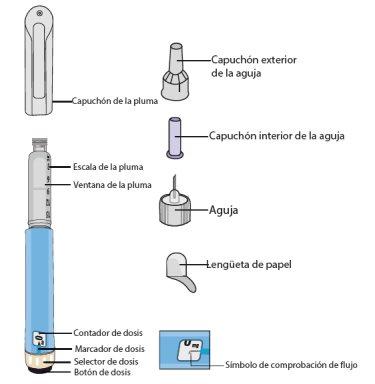






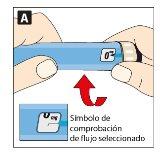
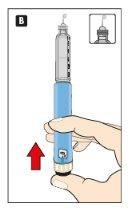 B
B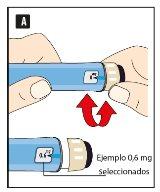 A
A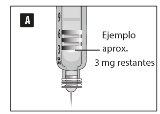
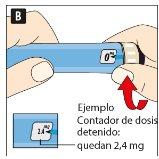
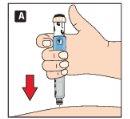
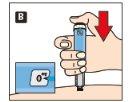 B
B